History of the Skirt and how it became short, or Everything you need to know about the Miniskirt
Article by Eleonora de Gray, Editor-in-Chief of RUNWAY MAGAZINE.
VERSION FRANÇAISE
History of the miniskirt is one of the fascinating stories in the history of human culture. The short skirt existed from prehistoric times in different cultures, and it was worn by men and women. It is not emancipation or other social changes that made the skirt shorten in primitive cultures, although it served to social differentiating in ancient times. In modern Western culture the story about how and why it got shortened has its moments. French Patent and Trademark Office (INPI) holds fascinating treasures stored in the archives, and for the first time we are going to publish these innovations and designs.
Prehistoric times
A skirt is the lower part of a dress/gown or a separate outer garment that covers a person from the waist downwards. A skirt can be a draped garment made out of a single piece of fabric. Most skirts are fitted to the body at the waist or hips and fuller below, with the fullness introduced by means of darts, gores, pleats, or panels.
Skirts have been worn since prehistoric times as the simplest way to cover the lower body. Figurines produced by the Vinča culture (c.5700-4500 BC) located on the territory of present-day Serbia and neighboring Balkan nations from the start of the copper age show women in skirt-like garments. Skirts were the standard attire for men and women in all ancient cultures in the Near East and Egypt. The Sumerians in Mesopotamia wore kaunakes, a type of fur skirt tied to a belt. Ancient Egyptian garments were mainly made of linen. For the upper classes, they were beautifully woven and intricately pleated. During the Bronze Age, in the Southern parts of Western and Central Europe, wraparound dress-like garments were preferred. However, in Northern Europe, people also wore skirts and blouses. In the Middle Ages, men and women preferred dress-like garments. The lower part of men’s dresses were much shorter in length compared to those for women. They were wide cut and often pleated or gored so that horse riding was more comfortable. Even a knight’s armor had a short metal skirt below the breastplate.

One of the earliest known cultures to have females wear clothing resembling MINISKIRTS were the Duan Qun Miao, which literally meant “short skirt Miao” in Chinese. During the XIXth century, the cut of women’s dresses in Europe varied more widely than in any other century. Waistlines started just below the bust (the Empire silhouette) and gradually sank to the natural waist. Skirts started fairly narrow and increased dramatically to the hoopskirt and crinoline-supported styles of the 1860s; then fullness was draped and drawn to the back by means of bustles.
In the 1890 the RAINY DAISY SKIRT was introduced for walking or sportswear. It had a significantly shorter hemline and would eventually influence the wider introduction of shorter hemlines in the early XXth century. A rainy daisy is a style of walking skirt worn during the “Gay Nineties” (1890–1900). The skirts were shortened and were worn by women of the “Rainy Day Club”. They were so-called because their shorter length meant that, by not trailing and soaking up water, they were easier to keep dry in wet weather. An alternative source for the name suggests that they were called after Daisy Miller, the eponymous heroine of the 1878 novella by Henry James.

Hemlines and Hobble Skirts
The hemline is the line formed by the lower edge of a garment, such as a skirt, dress or coat, measured from the floor. The hemline is perhaps the most variable style line in fashion, changing shape and ranging in height from hip-high to floor-length.
In the Paris collections of 1908-1909, designers presented a sweeping transformation of fashion, led principally by couturier Paul Poiret. Almost in an instant the S-bend silhouette and the frilly excesses of Edwardian designers were superseded by dramatically new looks. The contrived S-bend corset was discarded in favor of a version that more naturally comported with the body. Silhouettes became flued. And hemlines of the skirts started to rise above the shoes. The fame for rising hemlines of the skirts in the modern history of fashion belongs to Jeanne Lanvine, and then to Paul Poiret.

Another significant contribution from Poiret was his inventive and influential use of vivid colors. He was the first designer who dressed his models in colorful stockings instead of traditional black and white, that flashed bright from beneath of shortened skirts and dresses.
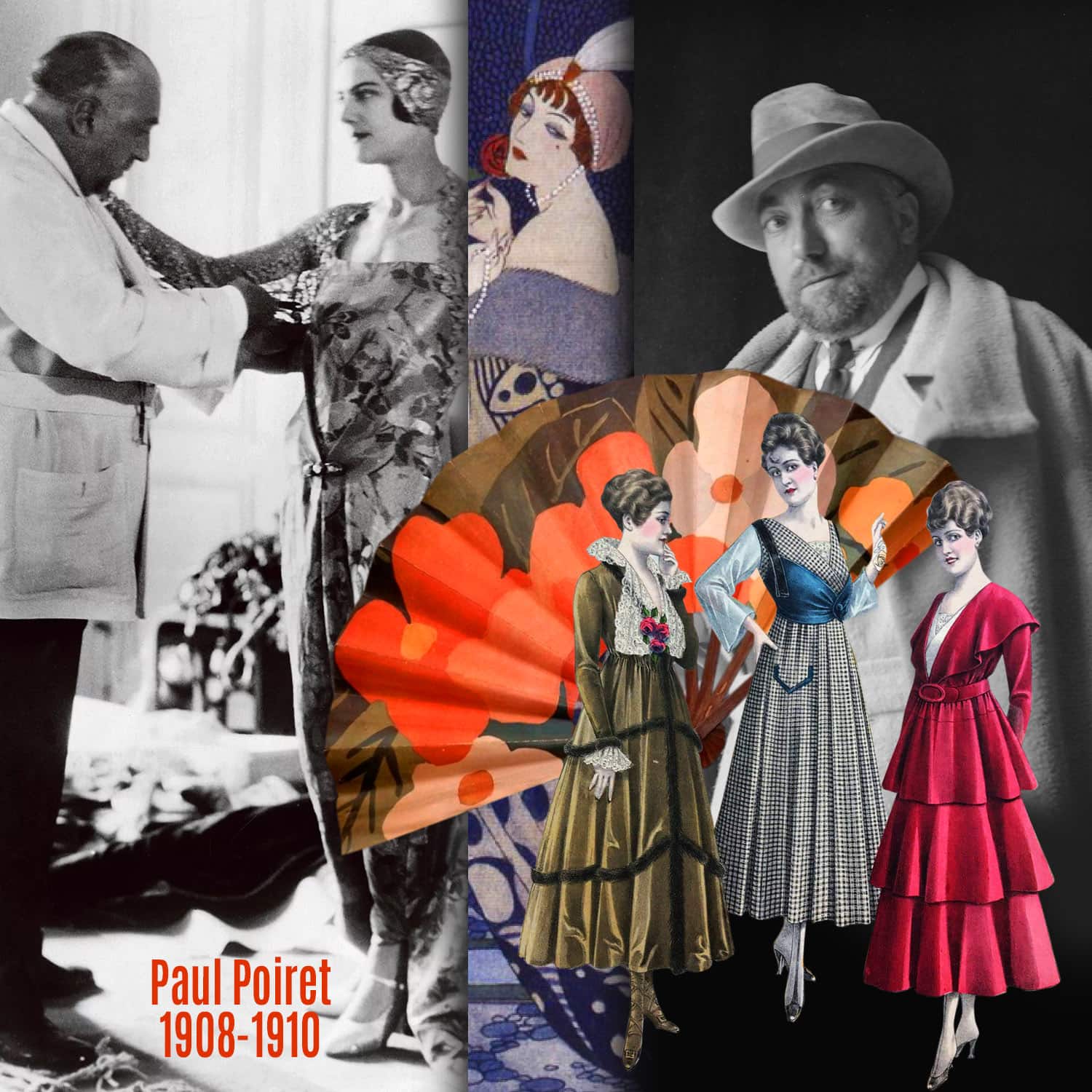
By the end of 1909, the first glimpses of new radical changes in fashion started a new era of fashion.
Paris 1908-1909 was influenced to embrace these bold fashion changes throughout the world – the rest of Europe, Great Britain and the United States. “Ladies Home Journal” reported in September 1910 that innovations from Paris completely took streets of New York”… It is nothing but short skirts, short jackets, little round bodies, small, narrow shoulders, short sleeves, and the slim, graceful silhouettes.”
And since 1910 the hemline of skirts and dresses became shorter and shorter, until it formed completely new looks and futuristic silhouettes of today.
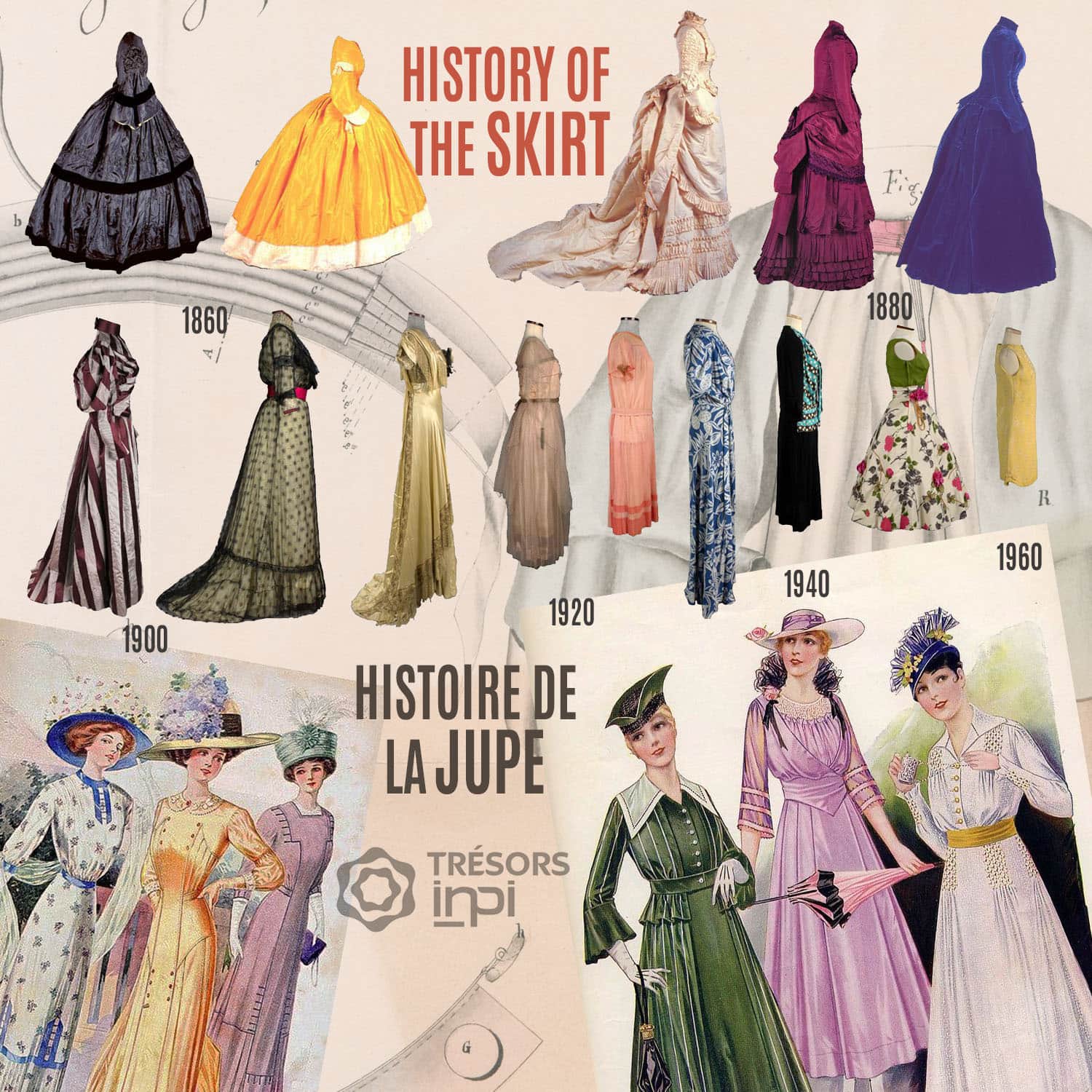
HISTORY OF THE SKIRT TROUGH INPI TREASURES
The treasures of the French Patent and Trademark Office (INPI) come back today, through different types of industrial property titles, on the evolution and the multiple models of the skirt since the XIXth century and until today.
Skirts and inventions of XIXth century
It was in the XIXth century that the skirt experienced its first major transformations, more in terms of shape than in terms of practicality. It goes from a fairly narrow shape to a wider and wider shape.
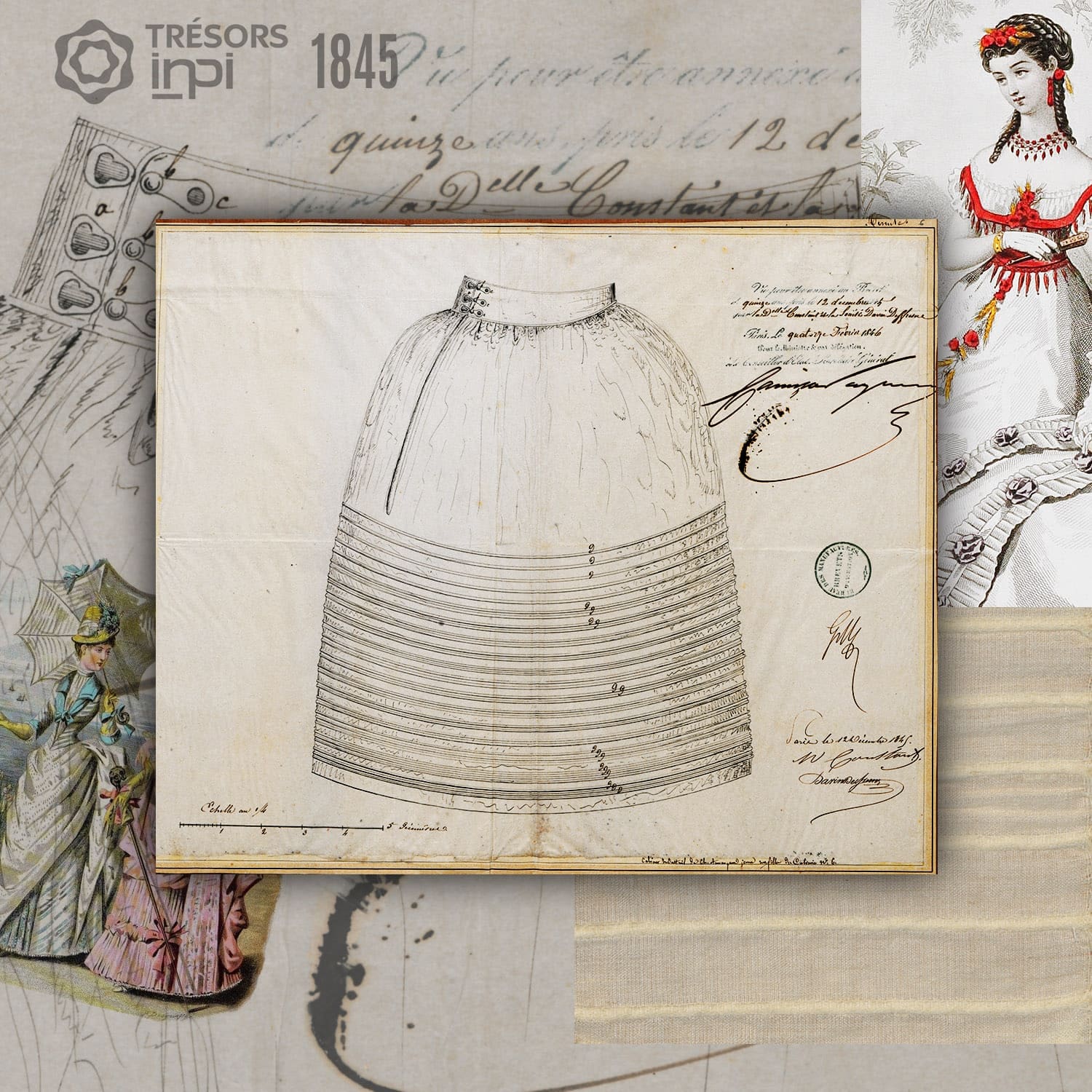
The crinoline skirts of the 1830s to 1860s marked the height of very large skirts for women. Layering petticoats, then inventing a “cage” of hoops, give the skirt its voluminous shape.
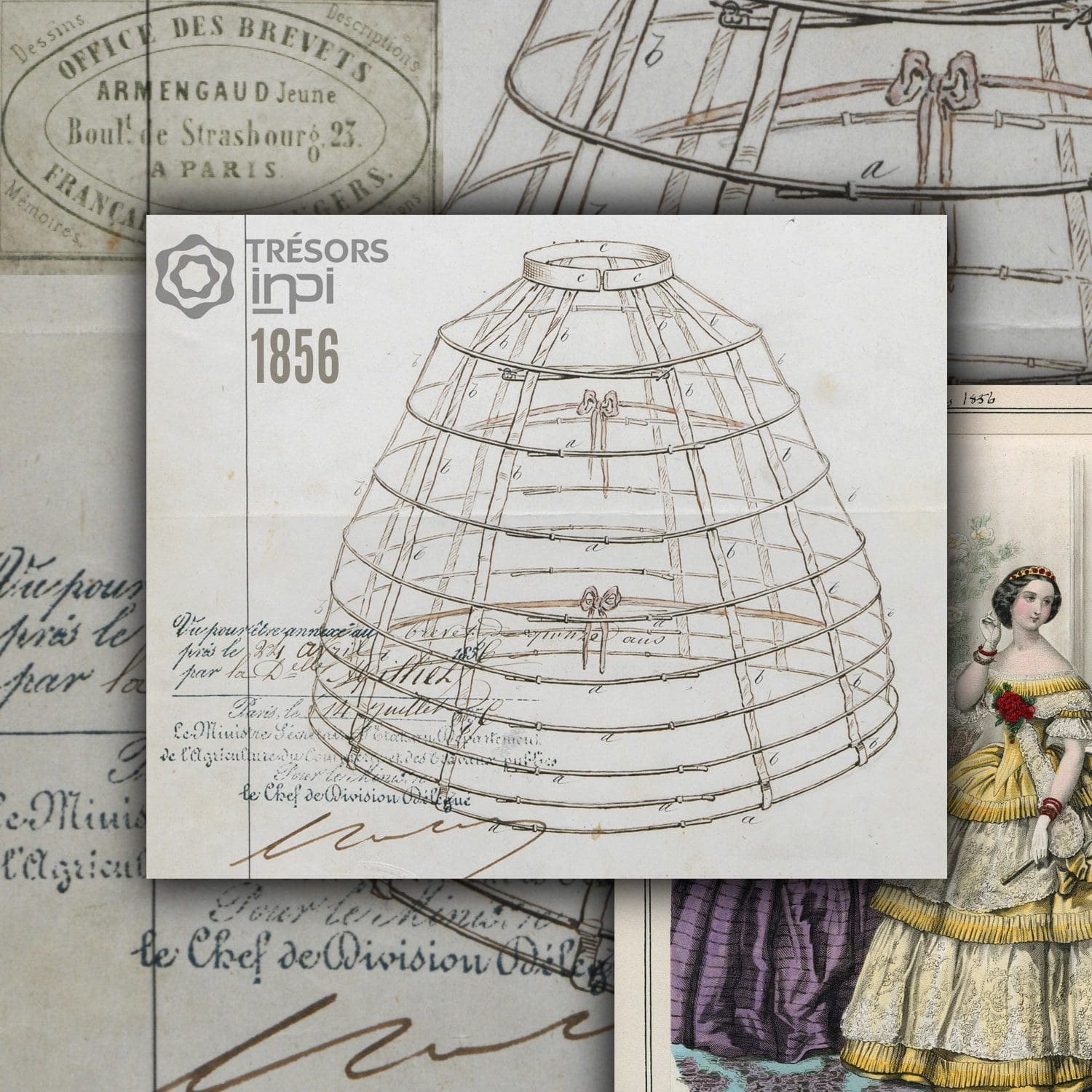
The INPI retains more than 200 patents of the skirts inventions between 1841 and 1901. The inventors are mainly interested in the shapes of the skirt and especially in how to roll it up and raise it to prevent women from getting dirty when they walk. This particular research around “tie-skirts”, “pencil cases”, “skirt lifters” almost makes inventors avant-garde.
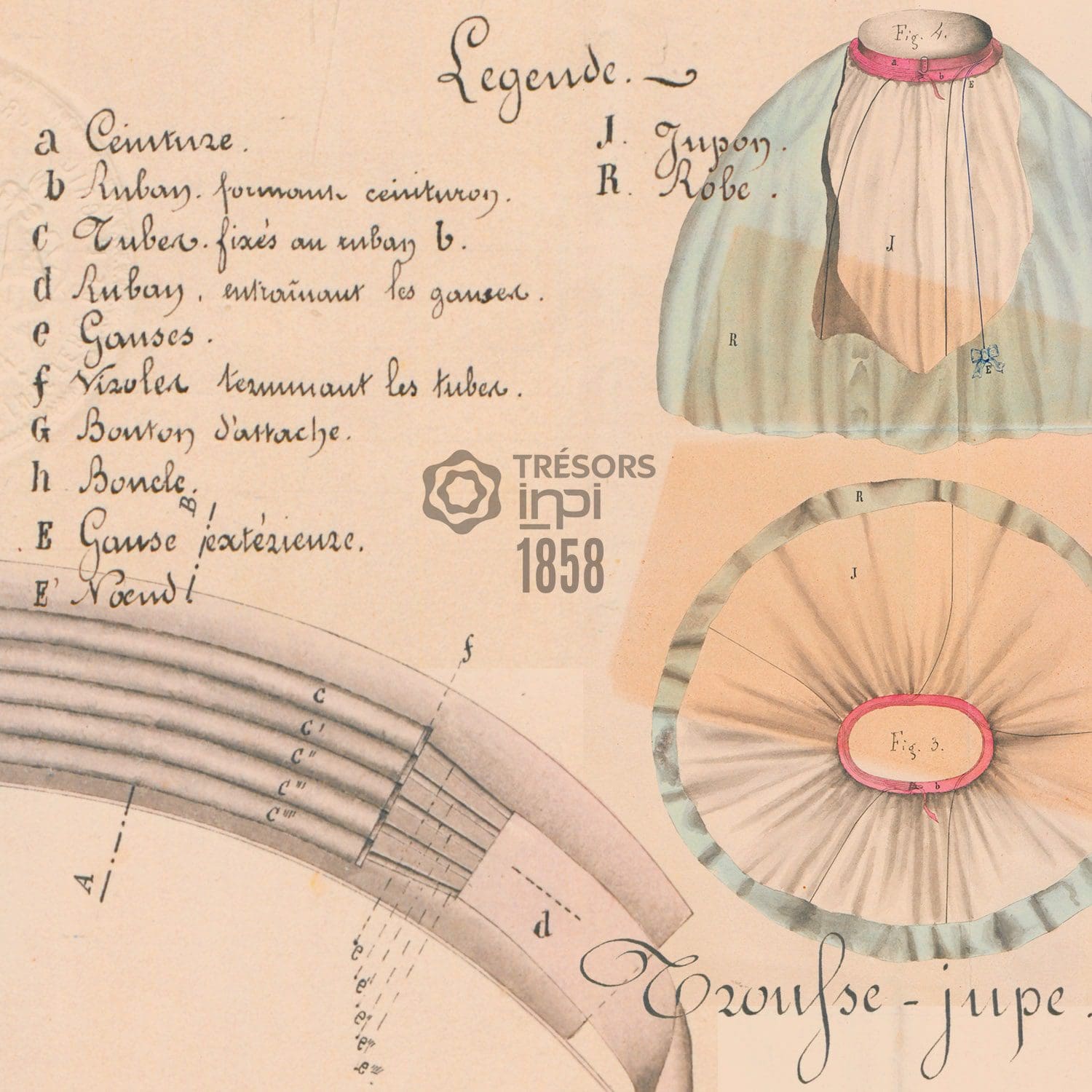

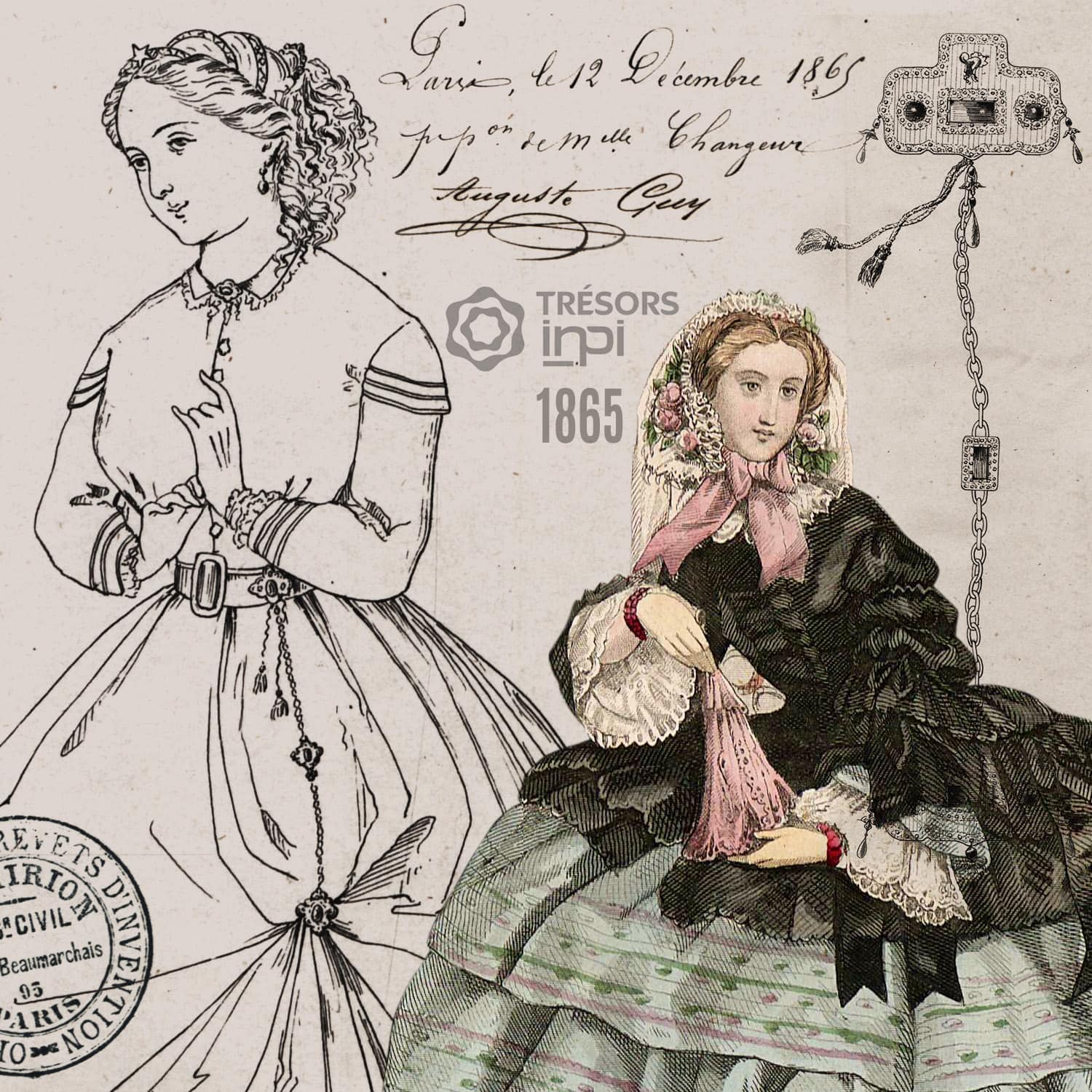
However the skirts remain essentially long. Symbols of femininity and elegance, they continue to hinder certain movements and activities of women. Certain inventors propose to reduce considerably the length for the practice of certain activities, specifically when riding horse or bicycle.
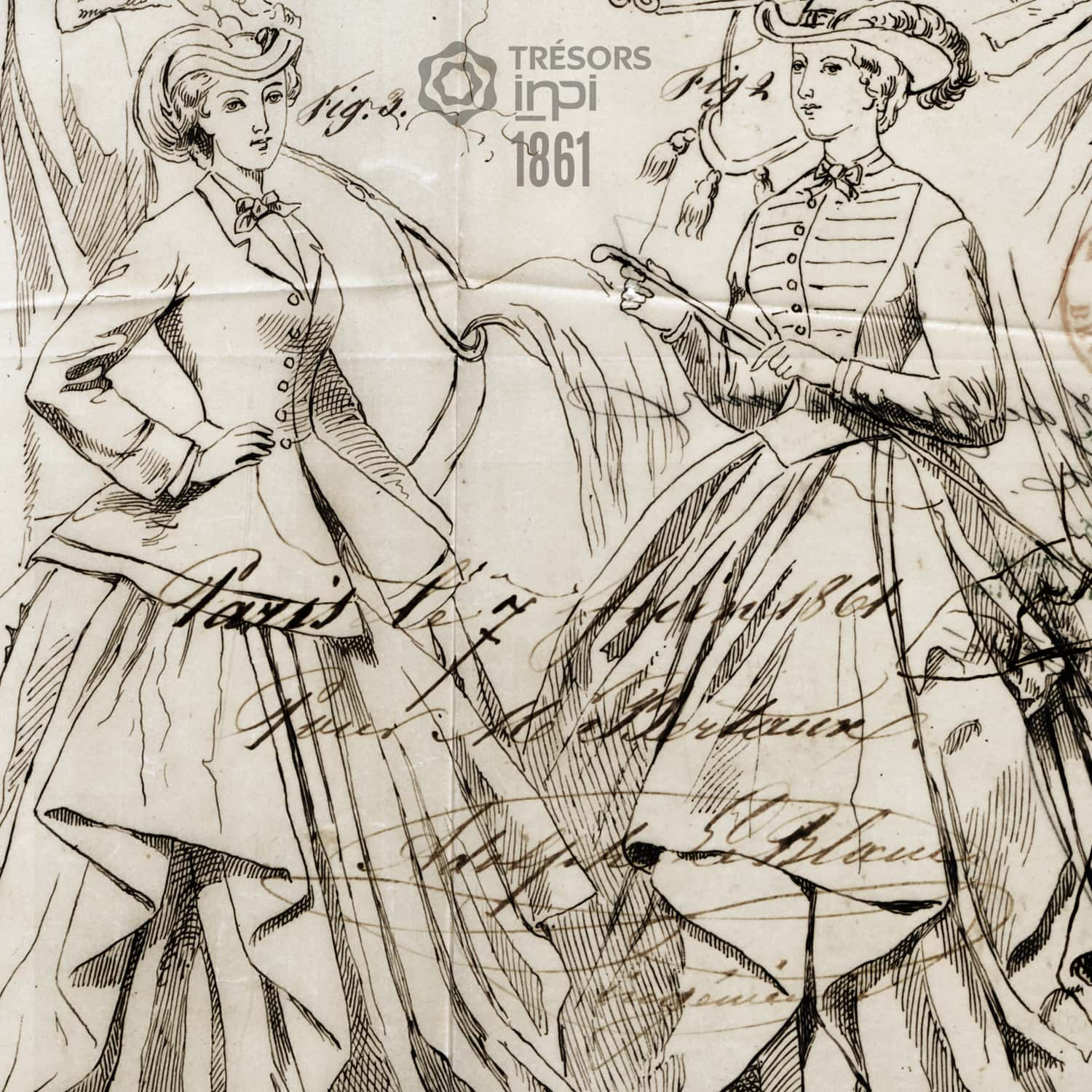

Ingenious systems were put in place, making possible either to raise the skirt to knee height, or to transform it into panties.
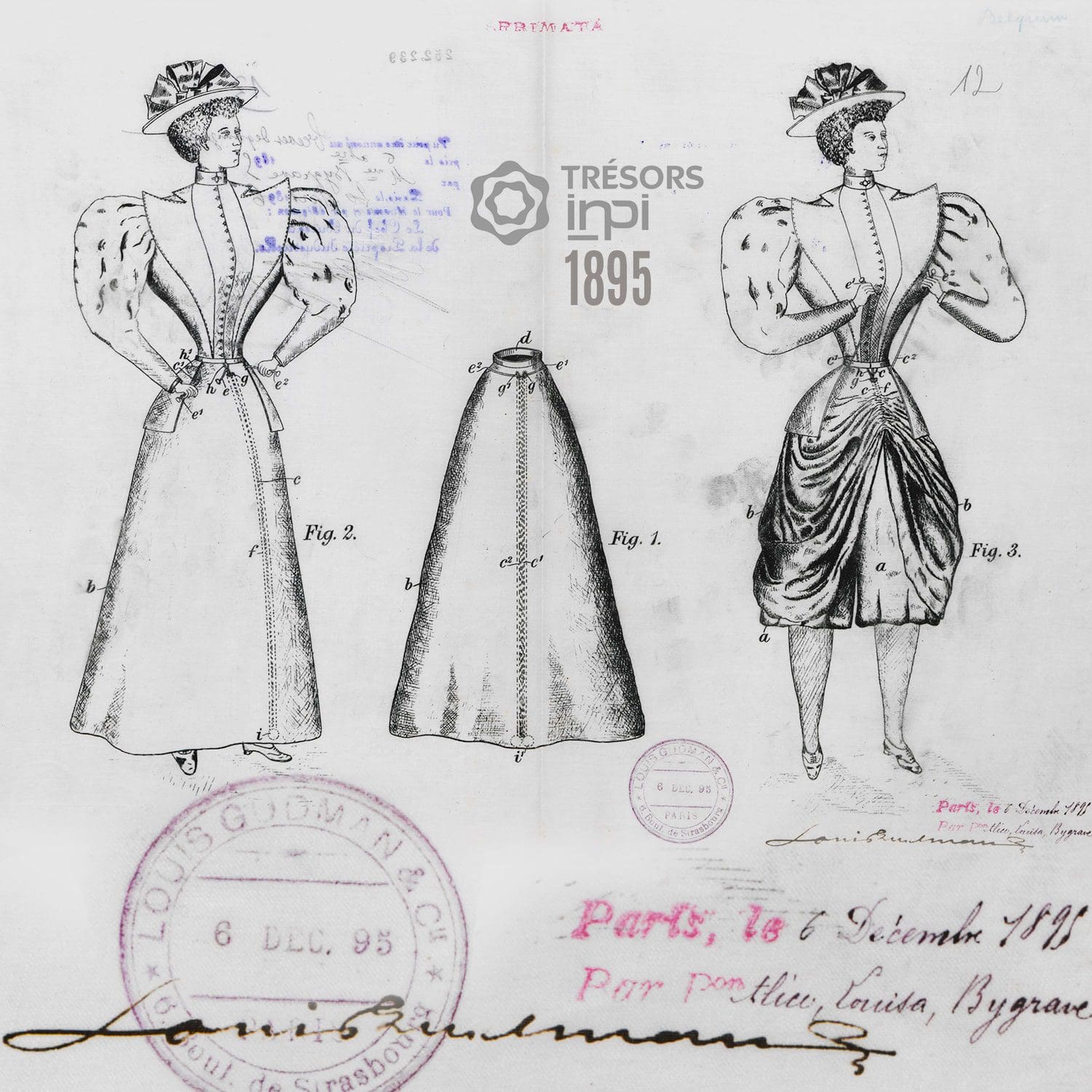


The inventors propose new and revolutionary forms of the skirt.
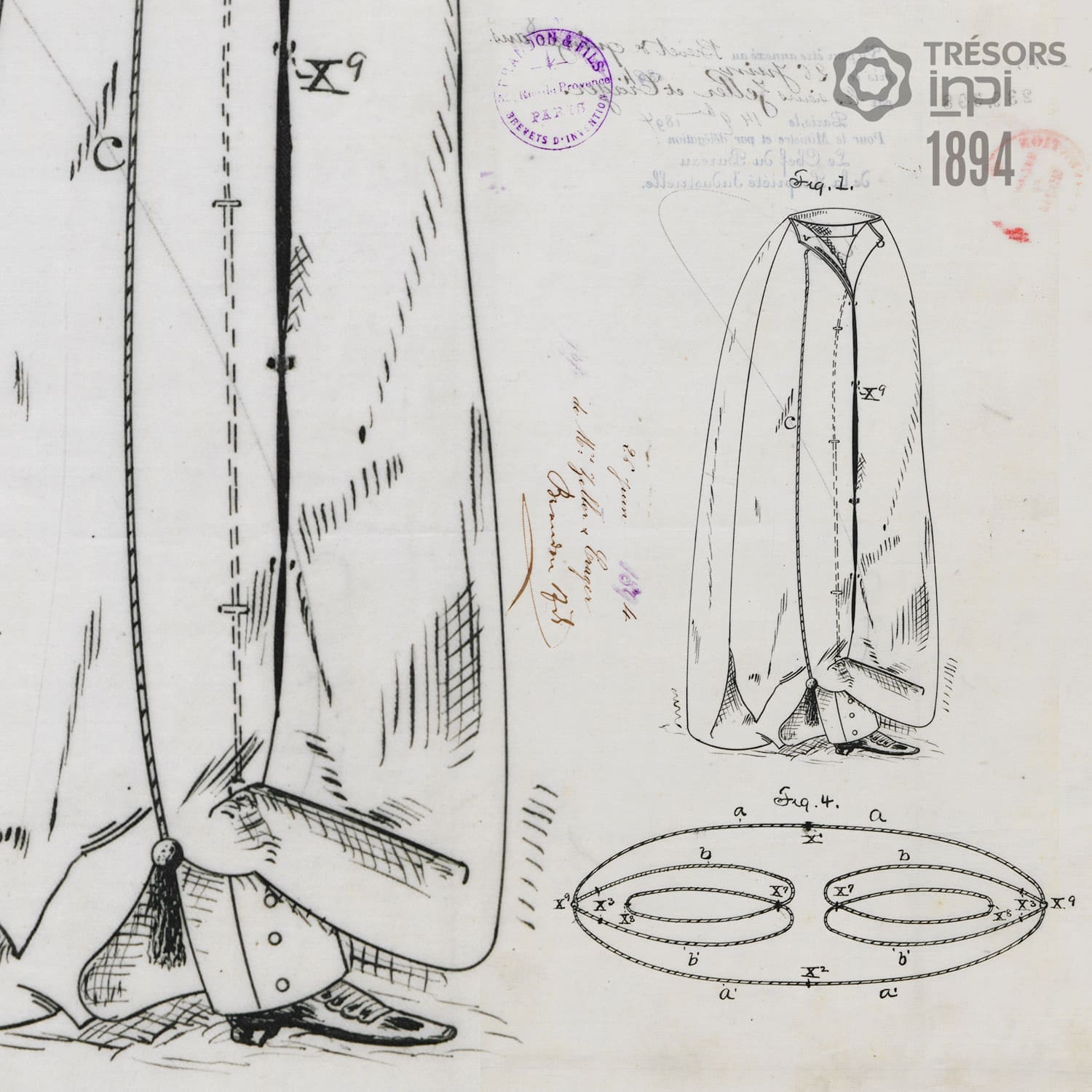
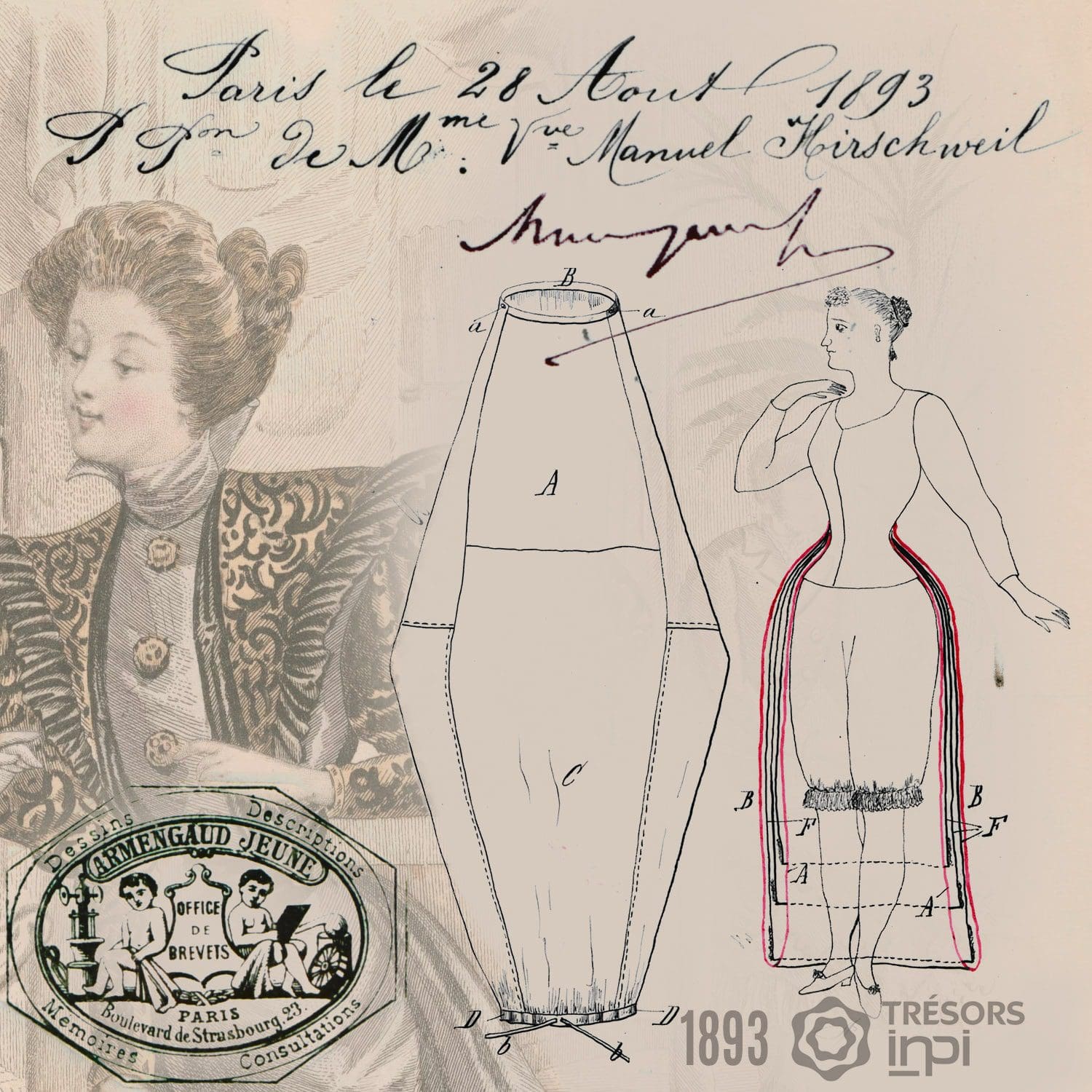
Shorten Skirts and inventions of beginning of XXth century
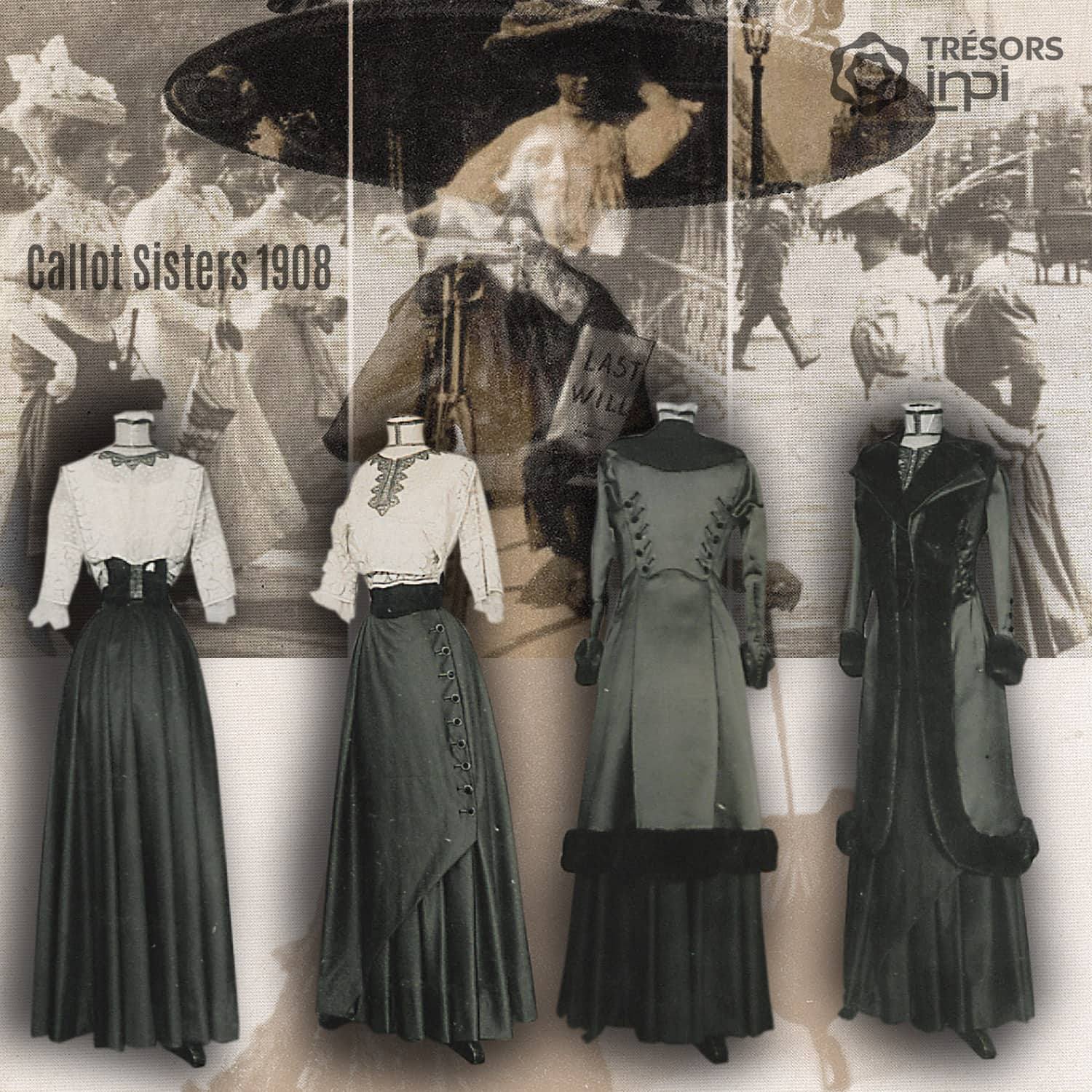
At the beginning of XXth century, 1908-1910, the hemlines of the skirts started to rise above the shoes, and then from 1910-1920 raised even to below ankle. Jeanne Lanvin is known to be the first designer who shortened women’s skirt in this revolutionary way. Even Paul Poiret was not that bold and daring.
The INPI keeps several designs of these innovations of Jeanne Lanvin from 1916 and 1922.
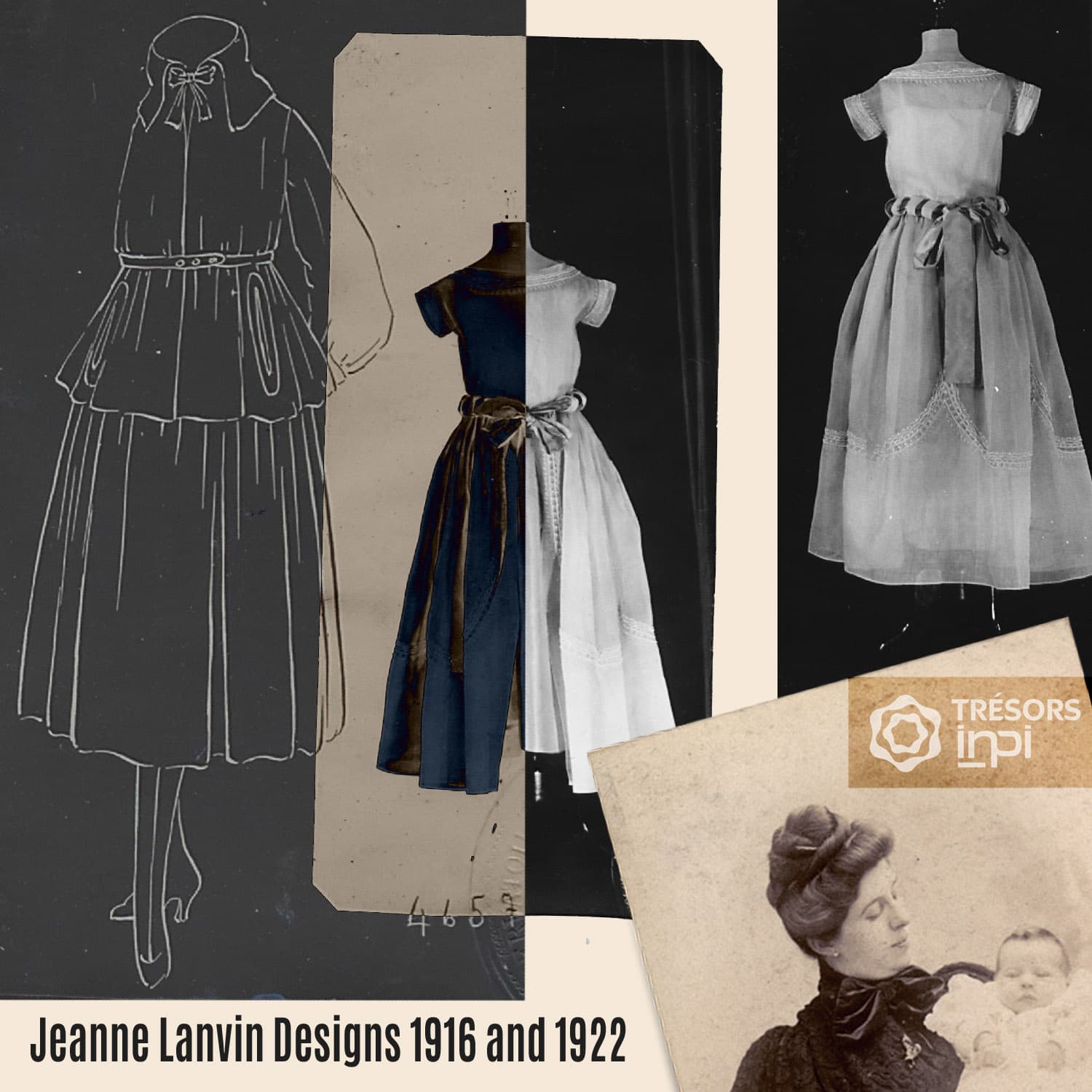
Coco Chanel created many revolutionary inventions. She was among the first designers who contributed to dramatic changes in fashion. One of them is short skirts.
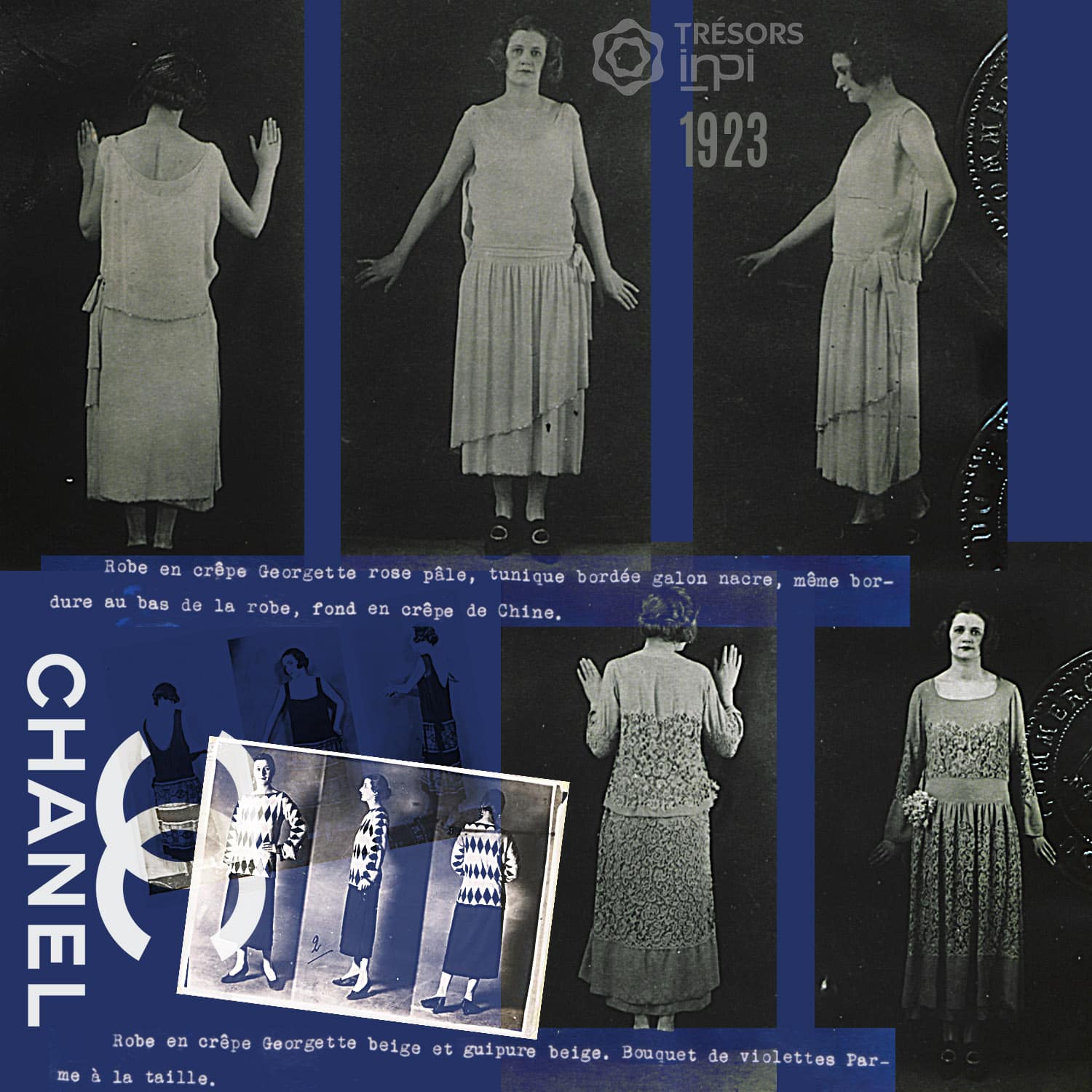
Many designers, emancipated women created absolutely innovative designers for new modern women.
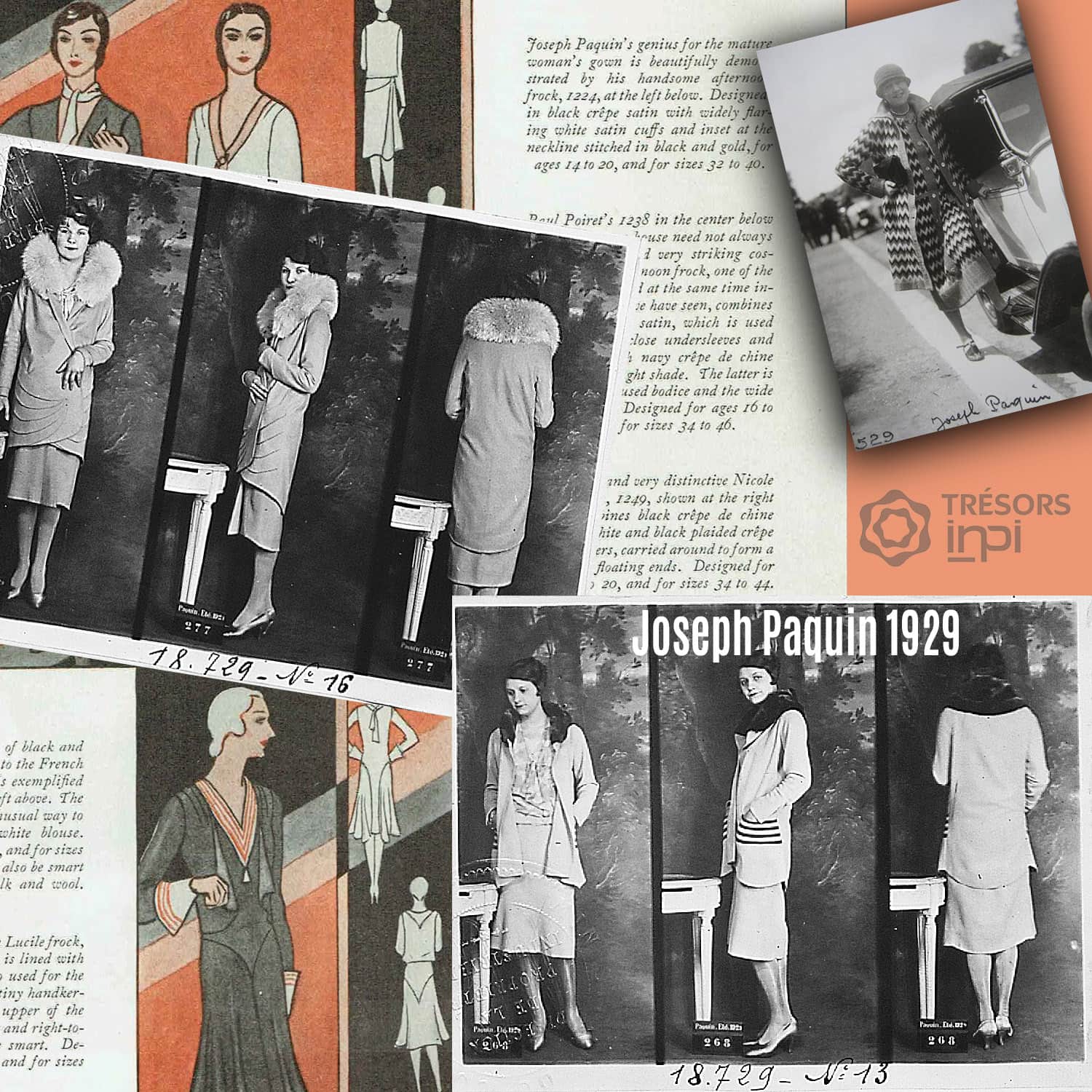
The Second World Wars forced women to privilege the practical side of the modern women outfit. In the archives of INPI Association “The New Star of the Small Children” filed the first design and model of nurses uniform.
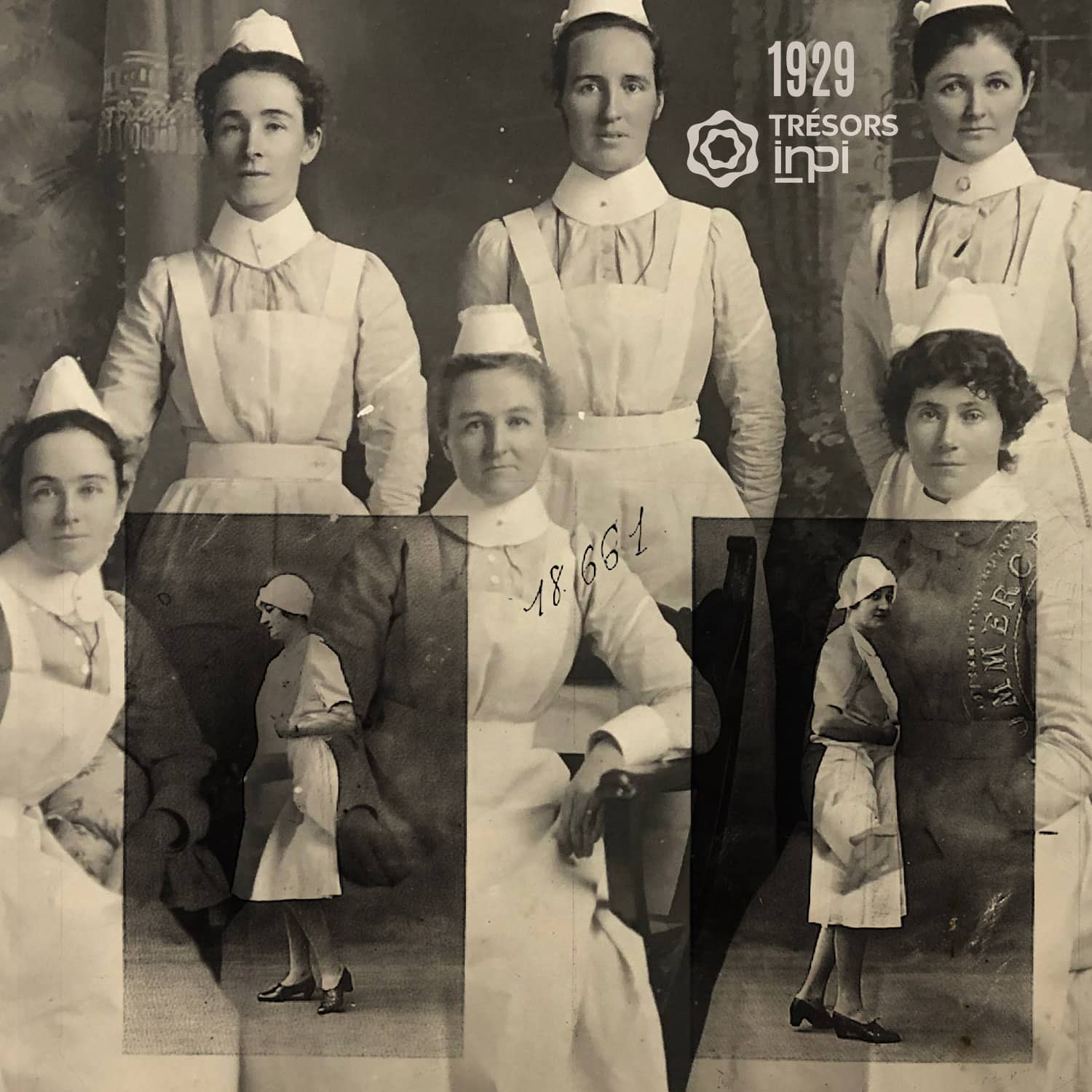
The Second World War made many changes, women started again to be concerned about the esthetic, and not only practical, of the outfits. Between 1945-1950 women were remodeling men’s uniforms, but from the 1950s women again started to look for more elegant dresses. In the INPI archives we can find several treasures from this period.
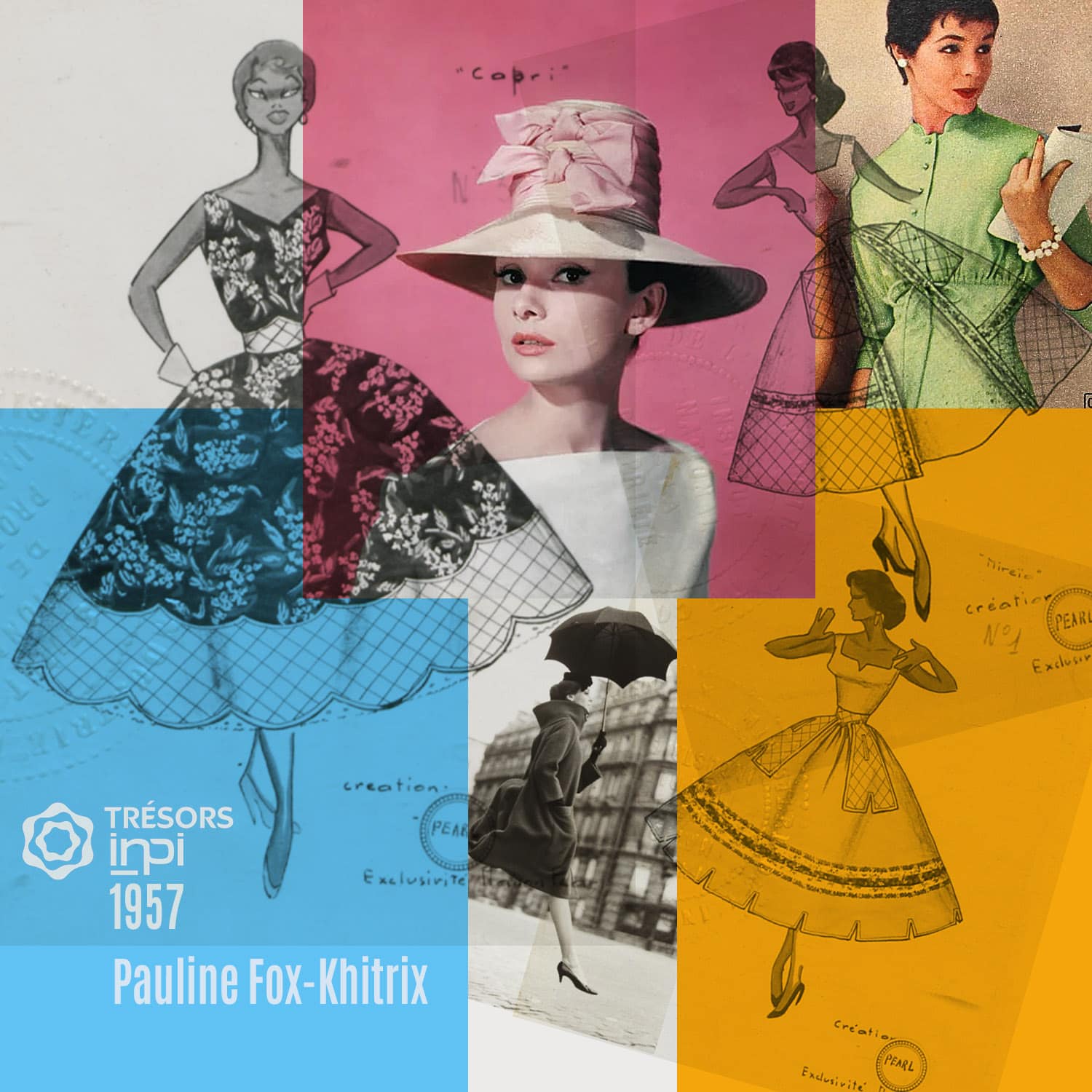
In the 1950s-1960s Christian Dior created the most formidable and revolutionary designs, and contributed to the skirt being shortened more and more. And this time for the first time in history the hemline of the skirt raised above the ankle.
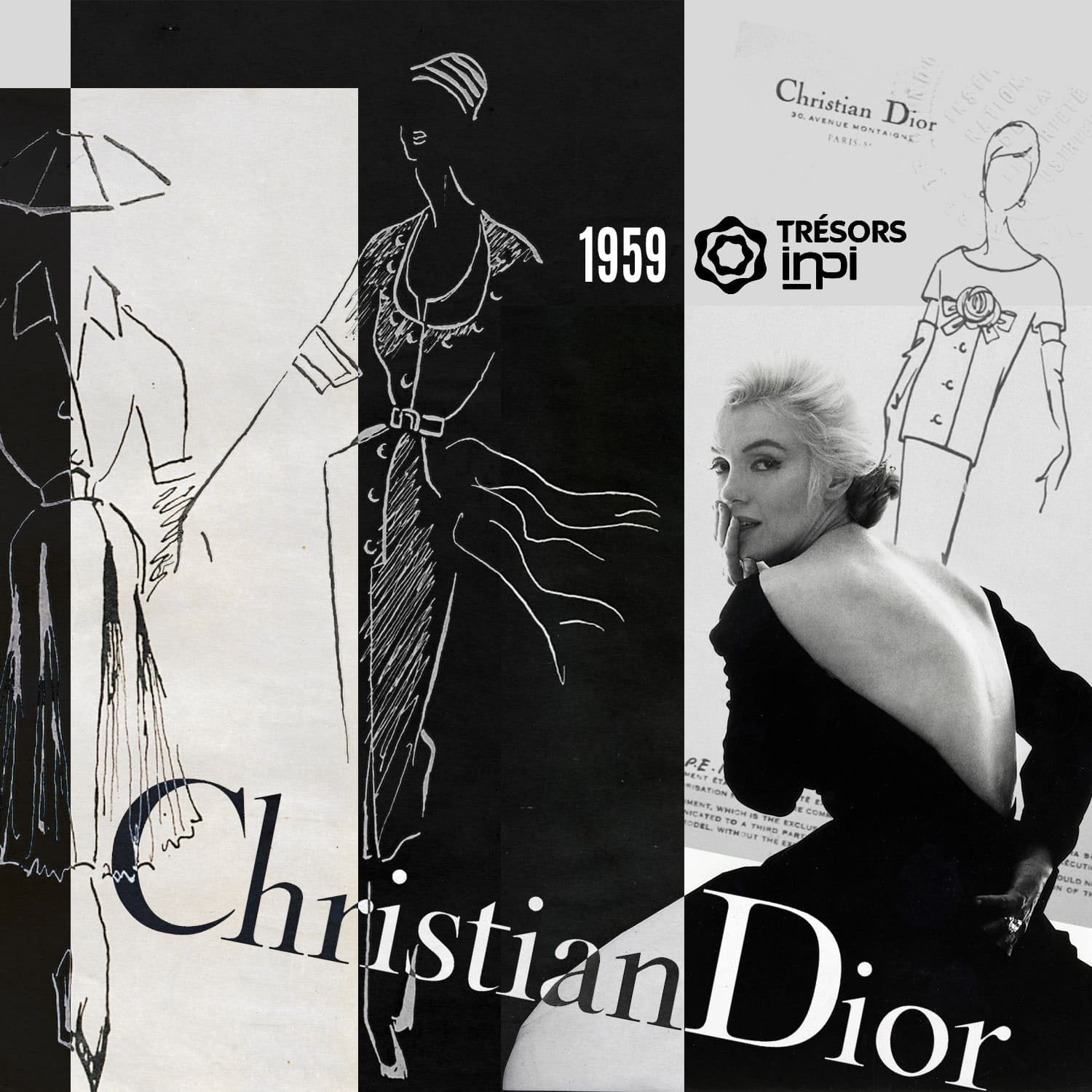
In the 1960s women wanted to be emancipated, even extreme and provocative. So the skirt became extremely short. The first filed in INPI design of leather winter relatively short skirt belongs to Z. Merenlender, dated January 20, 1960.
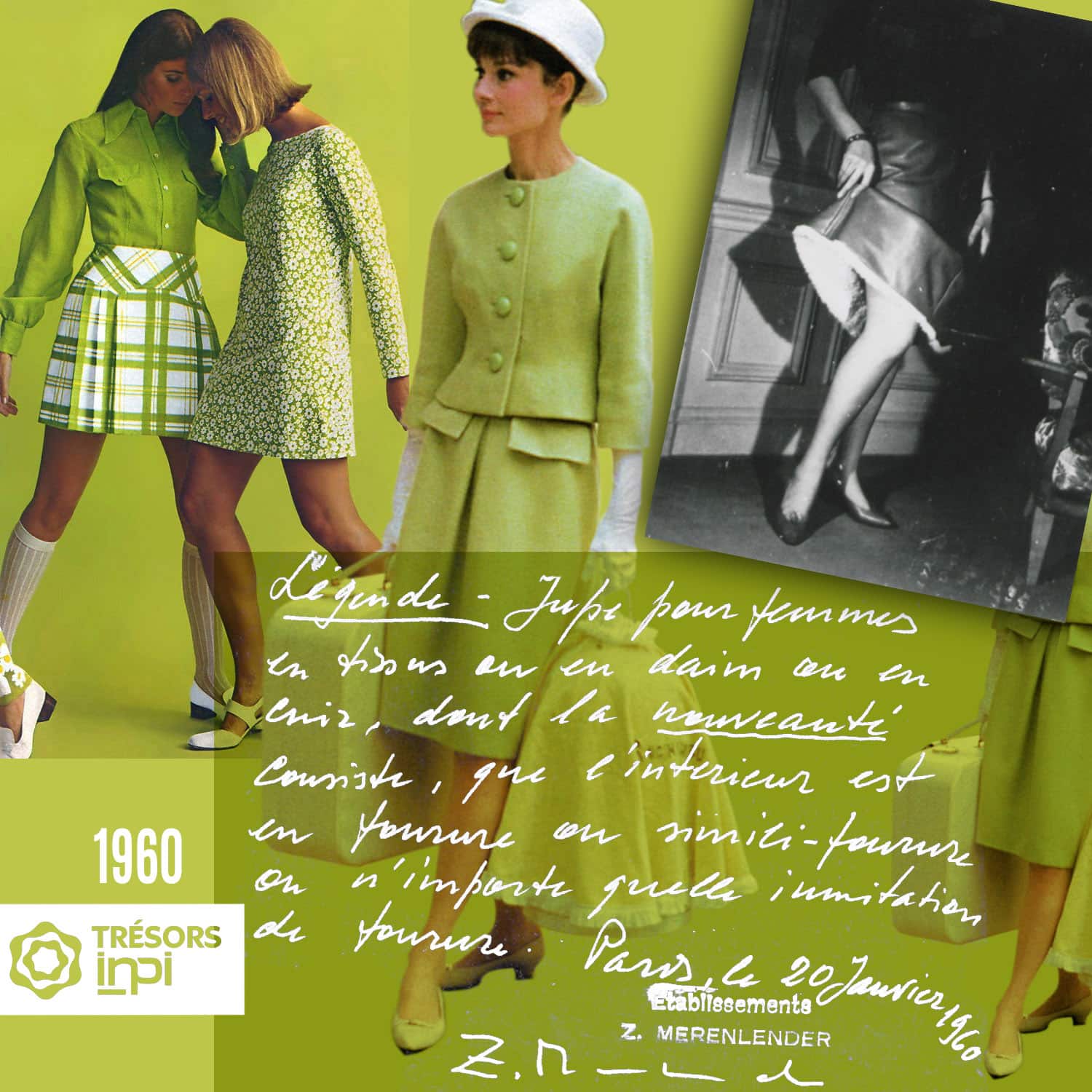
Popularization of so extravagant very short skirt in 1960s belong to English designer Mary Quant, who made the skirt the “Most Wanted” by all fashion addicted young generation of women. She imagined “a women, who have to run behind a bus ”.
In France, designer Andre Courrege filed with INPI his designs in June 18, 1965 his first mini-skirt. The mini-skirt became a flagship of Courrege fashion house.
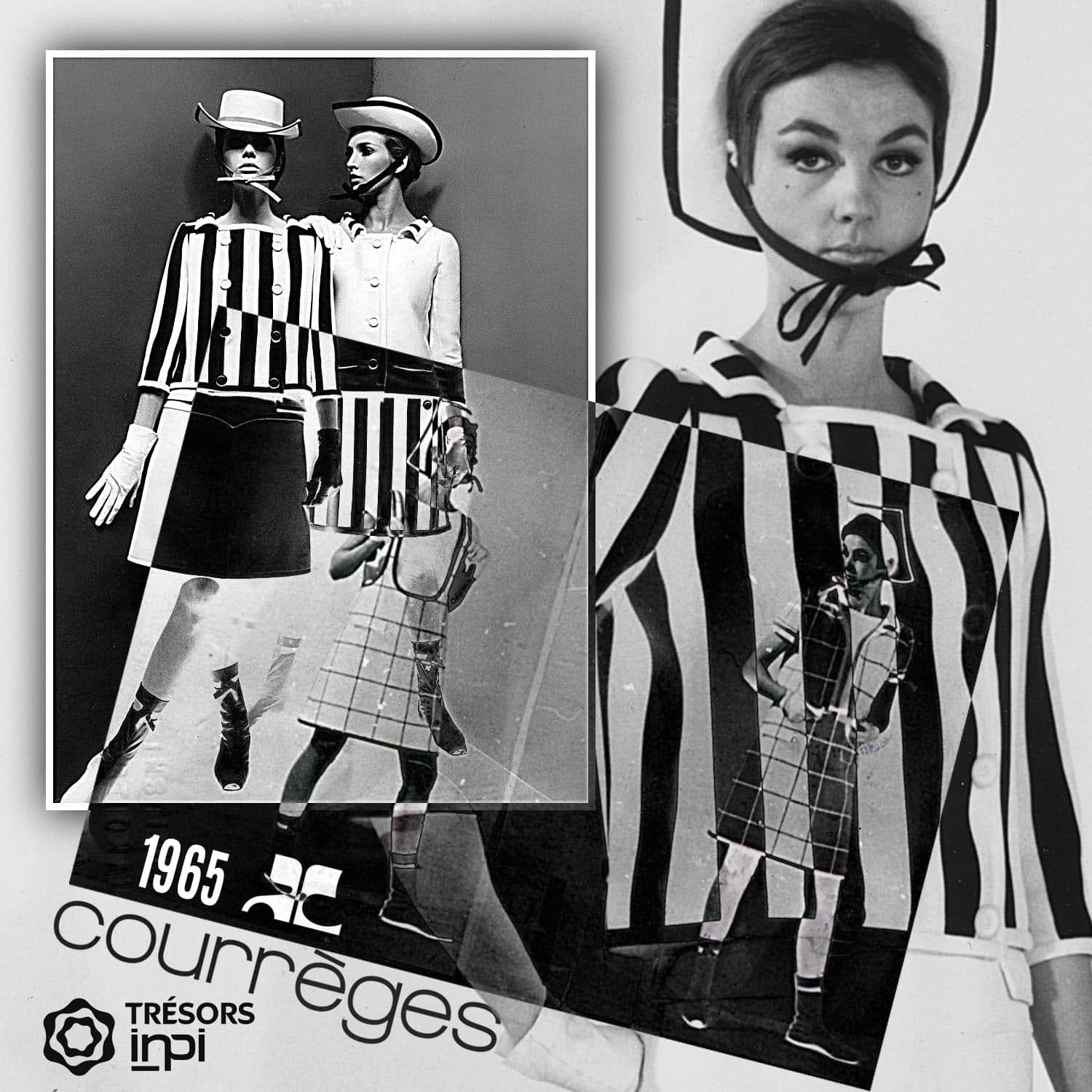
Another very curious innovation filed with INPI in July 26, 1966 by Jacques Cerveau, Jacques Godingen and Joëlle Charlinis is a design of “transformable” skirt, transforming maxi-skirt to mini-skirt by the means of zipper.
But the name “mini-shirt” was still not adopted by the designers.
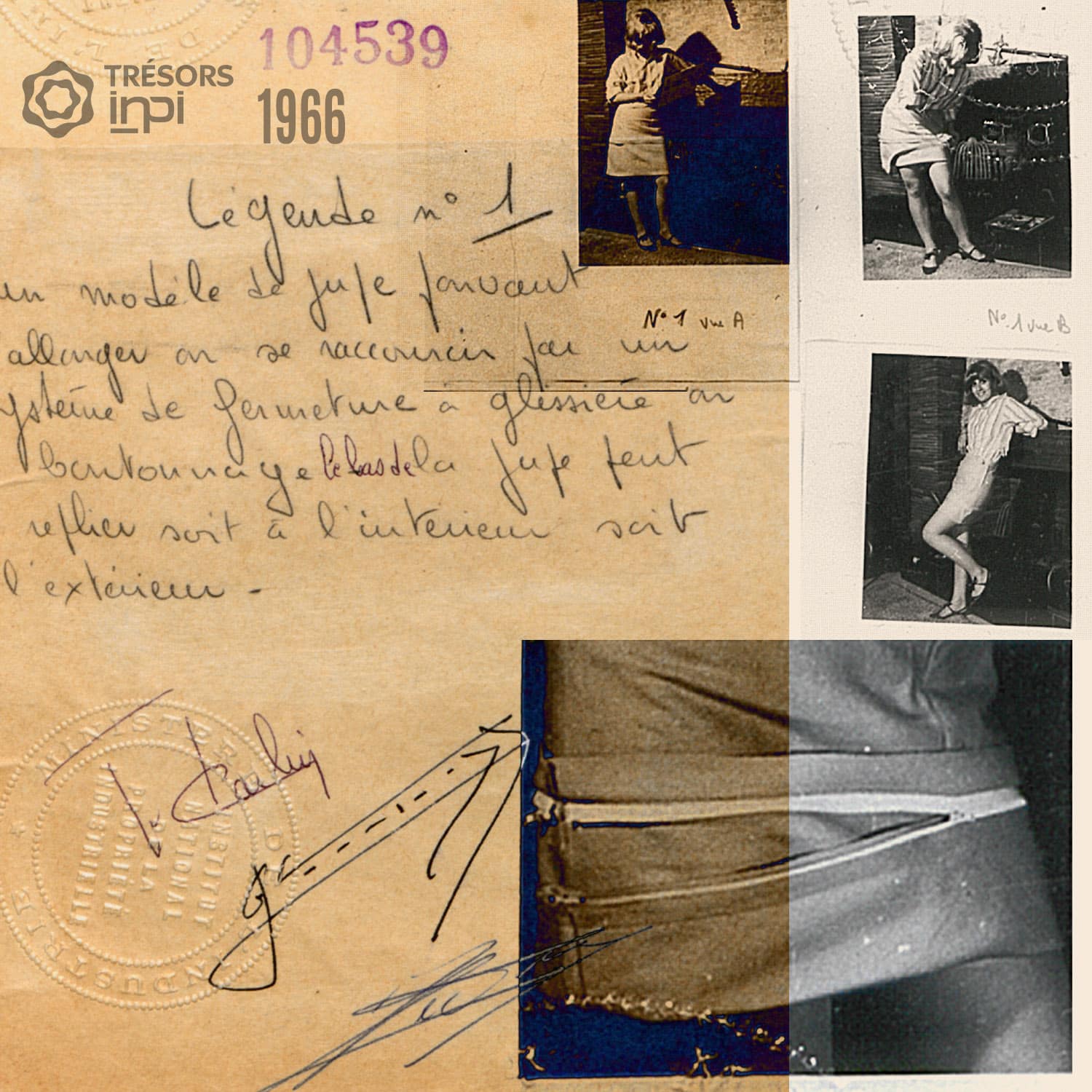
The first registration of a skirt design with the notice “Mini-skirt” with INPI dated December 21, 1966 by René May and Miss Dif.
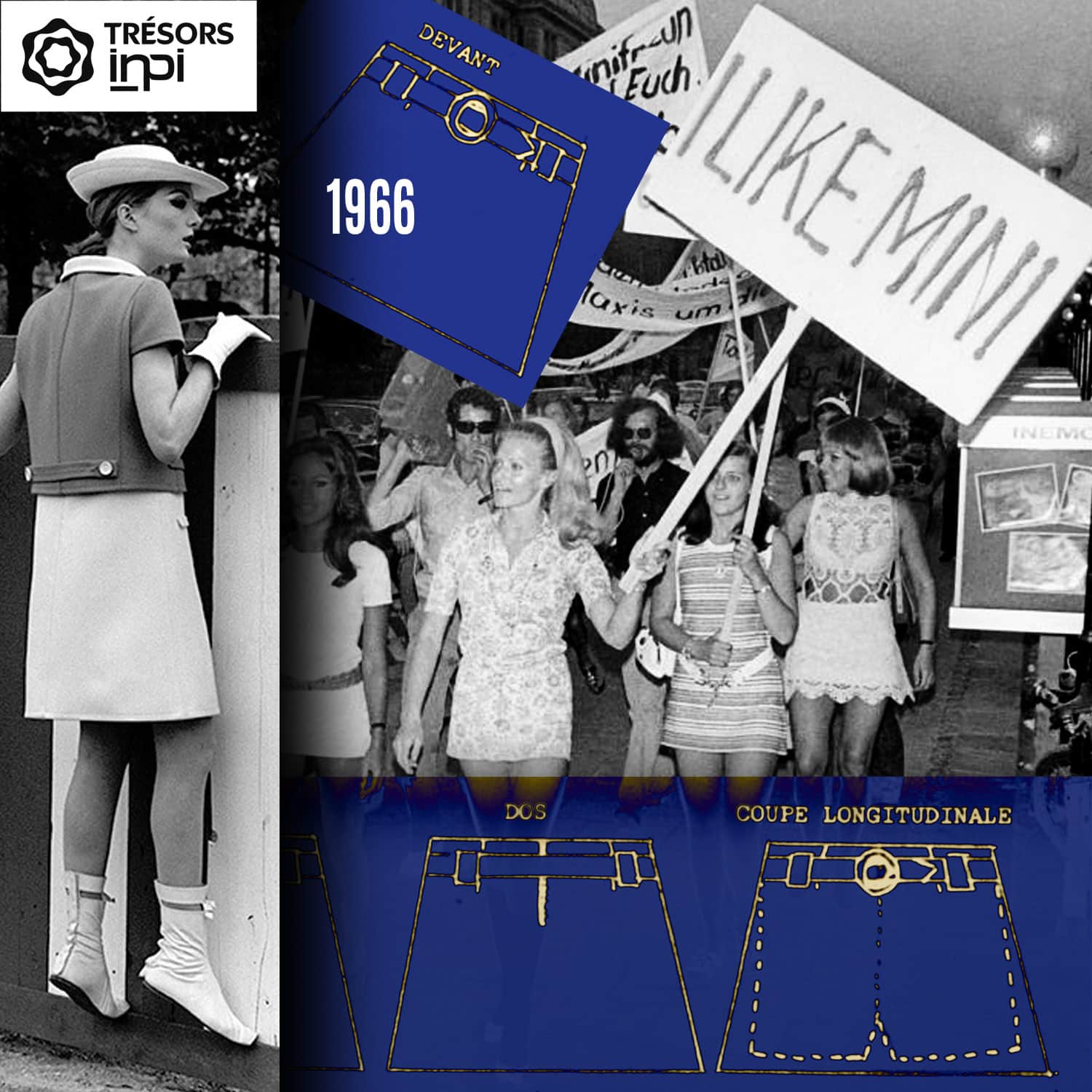
Sport made massive contribution to the changes in the look and length of the skirt. In the 1920s the tennis outfit was gradually replaced by a skirt. The short skirt is also essential in the figure skating. Lacoste filed with INPI design of tennis mini-skirt in September 26, 1972.
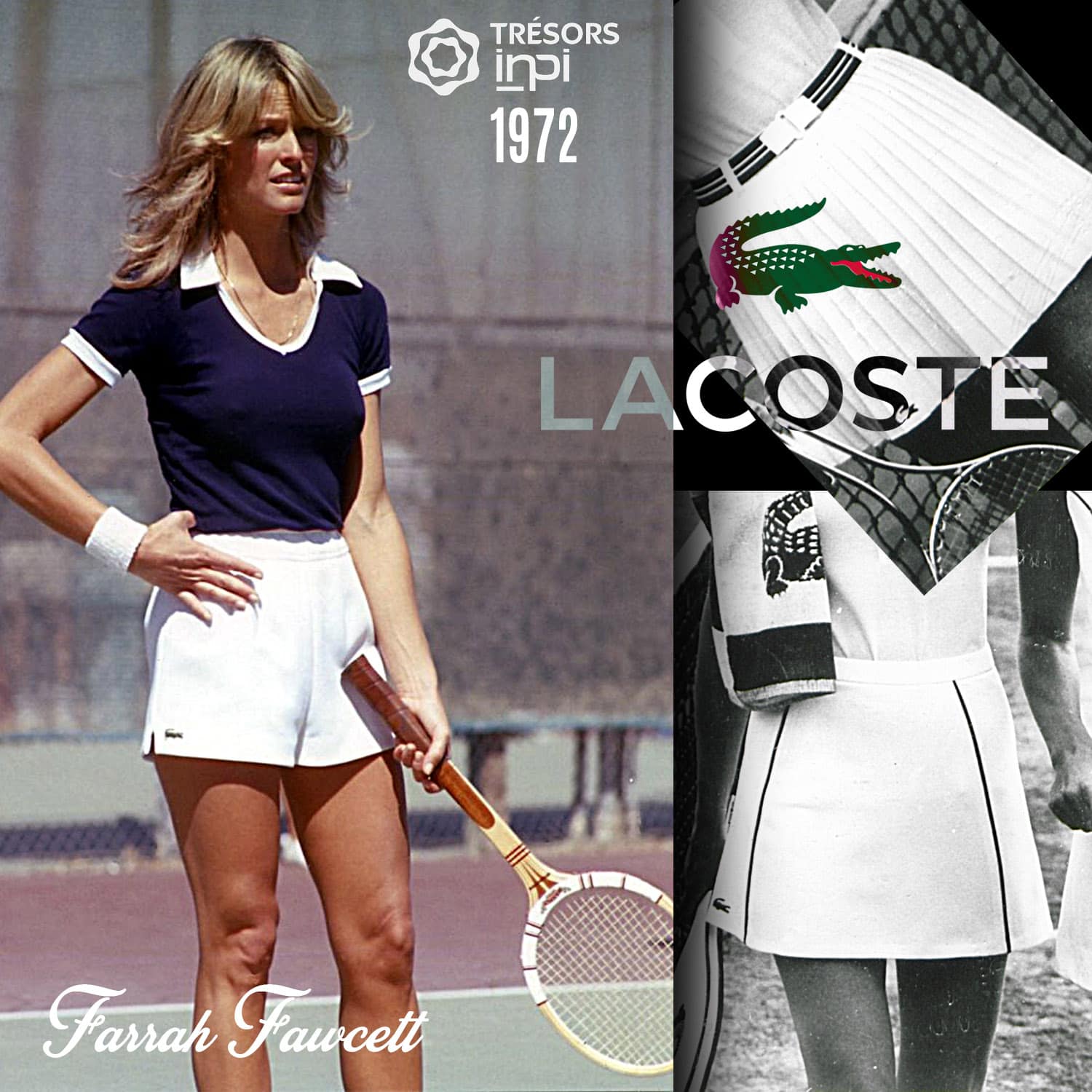
Sport not only changed the length of the skirts and made mini-skirts very popular, but also made a shorten the trousers “shorts”. Variations of the shorten models were countless.
The mini-skirt thus becomes the symbol of the liberation of the body of women in a society marked by sexual liberation. Shocking, often described as “provocative,” sexy, the wearing of the miniskirt is against established order and conservatism.
In the 1970s, the miniskirt was seen alongside other models, notably the bohemian skirt and the midi skirt. Long again, these trapeze-shaped skirts stop at the calves and reveal the ankles of women.
INPI has registrations of the different short models for skirts, shorts, dresses, tunics, pants presented by house Stylist at New Year Eve, December 31, 1976.
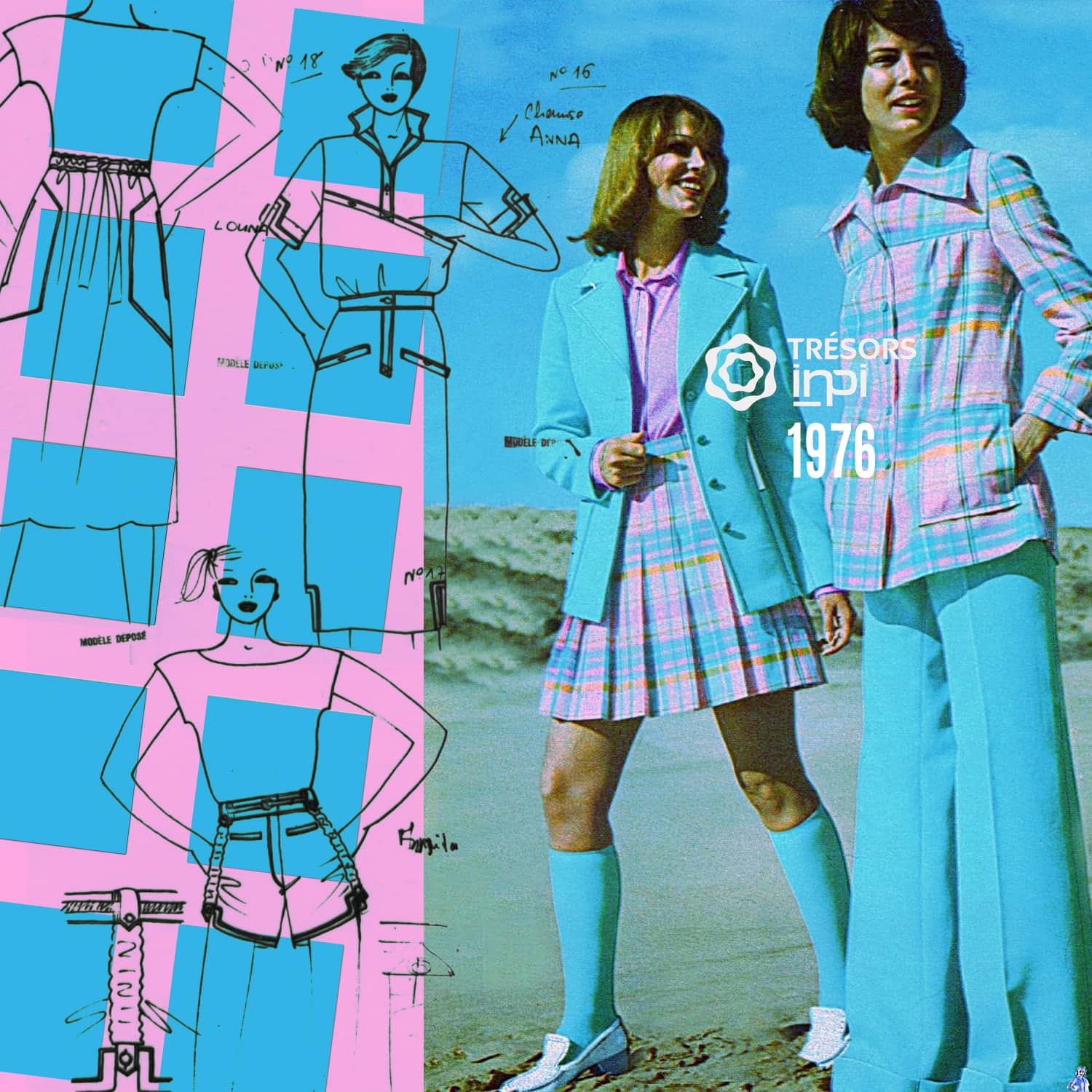
The 1980s became even more extravagant with pop, neon colors and eccentric patterns. In 1984 that Jean-Paul Gaultier promoted unisex fashion in which men wear skirts, and women pants, or skirts/pants at the same time.
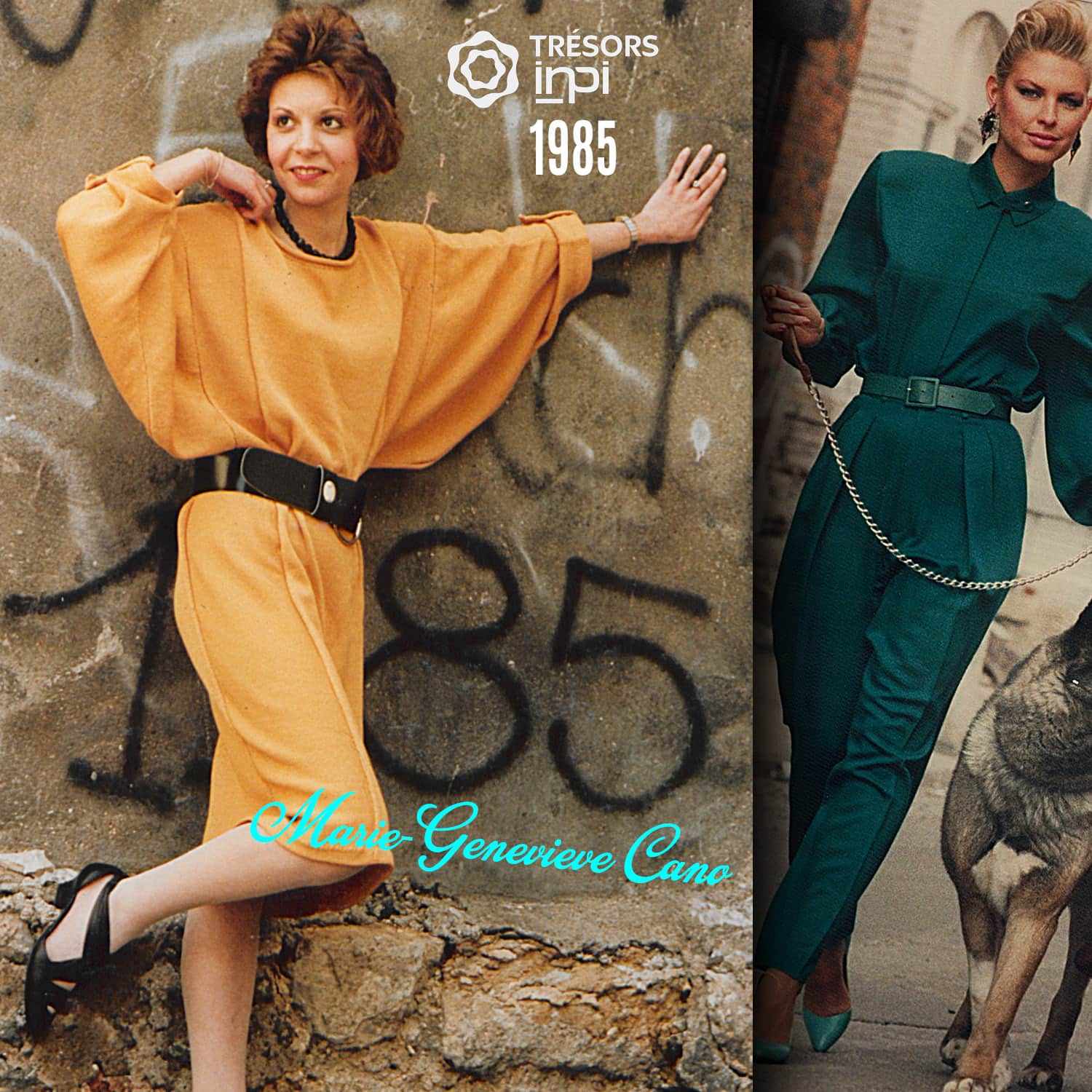
The 1990s put an end to bright colors in favor of a more minimalist and grunge fashion. Short or even very short skirts coexist with longer models intended for the office. The 90s are also those which saw the appearance of a surprising combination: the skirt-over-the-pants.
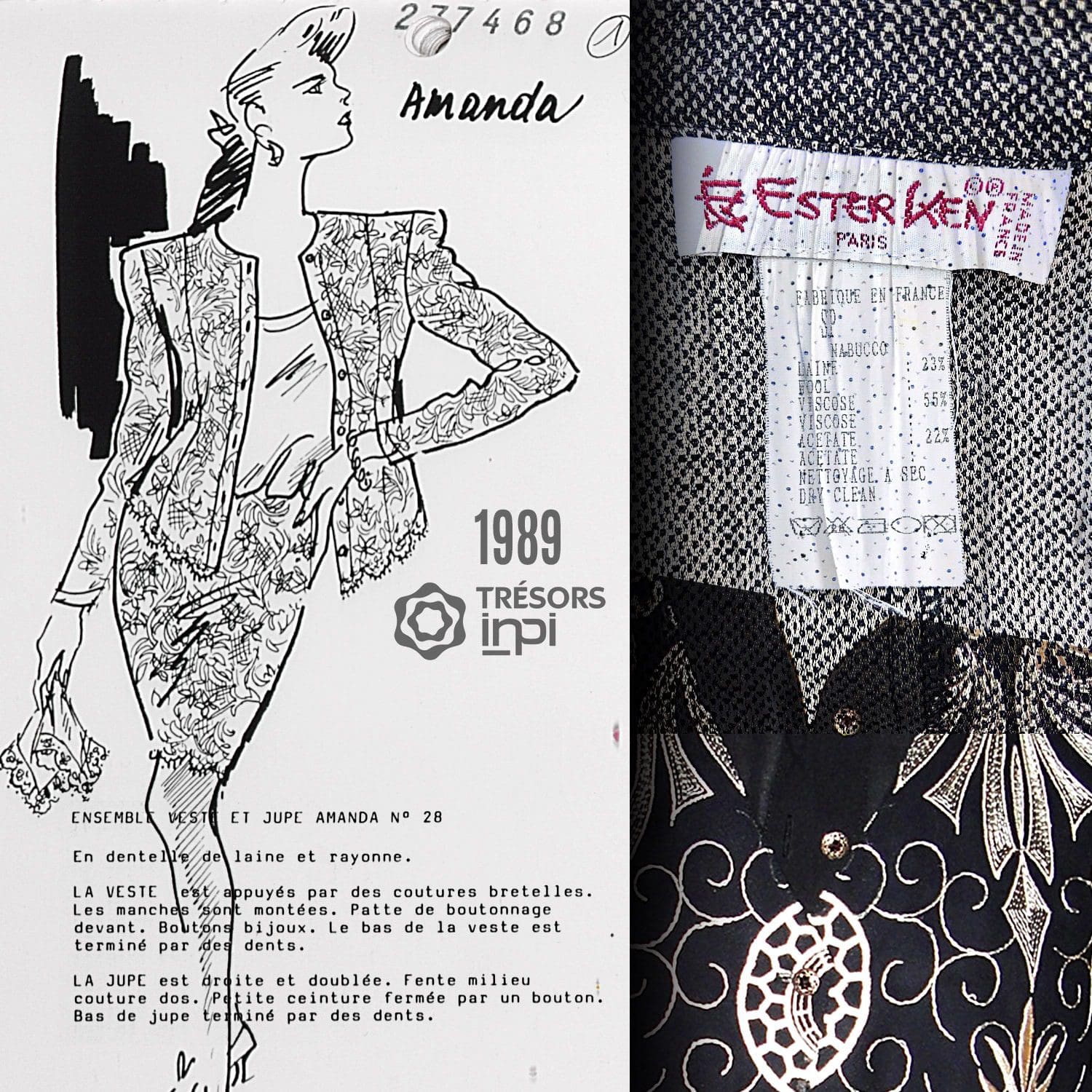
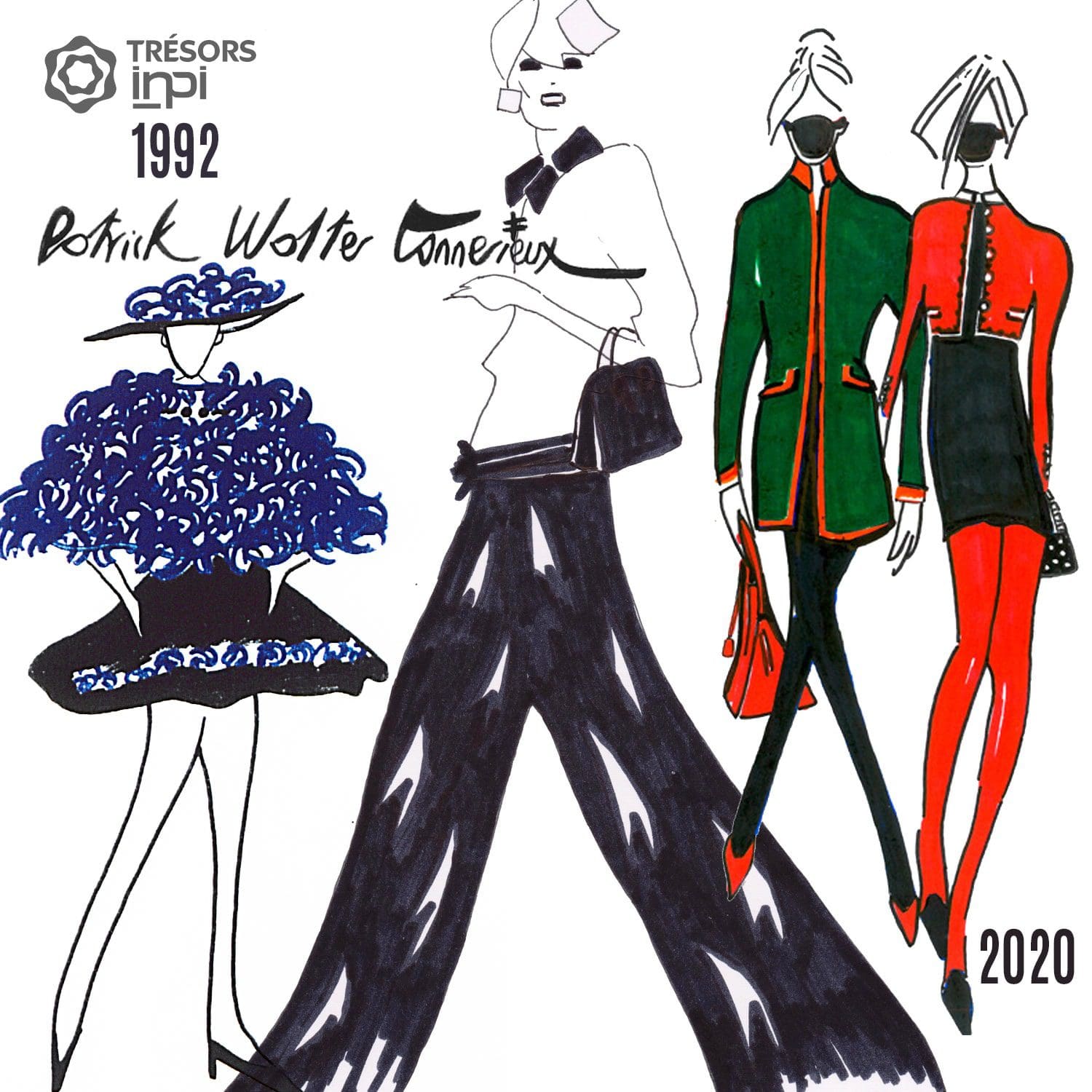
In the continuity of the 90s, the belted denim skirt is essential in the wardrobes of the 2000s.
In various shapes, colors, lengths, textiles and even patterns, the miniskirt leaves a lasting mark on wardrobes and on catwalks. A reflection of social and political changes as much as an indication of the place of women in public space, the skirt is an iconic, timeless piece, constantly reinvented.
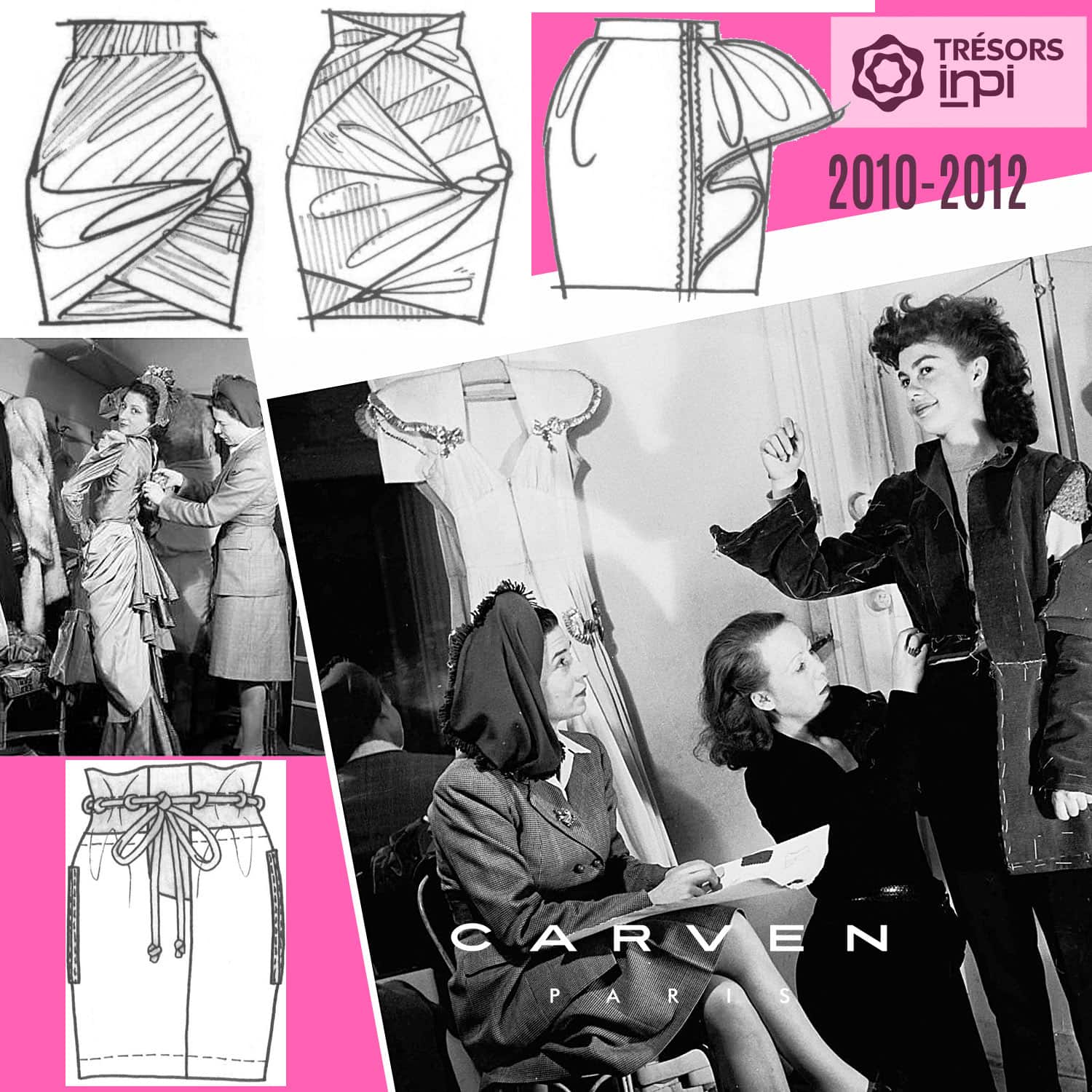

RUNWAY MAGAZINE presents INPI treasures – innovations in fashion. The National Institute of Industrial Property (INPI) examines and issues industrial property titles (patents, trademarks, designs and models) in France. Created in 1951 under the supervision of the Ministry of the Economy and Finance, it is the heir to the institutions that have preceded it since the end of the 18th century. As such, the INPI is responsible for the management of these public archives and has thus become one of the memories of innovation in France. It watches over a rich heritage, made up of all patents since 1791, trademarks since 1857 and designs since 1910: nearly 7.5 million documents, or 145 linear kilometers carefully preserved. The fruit of generations of inventors, engineers, industrialists, creators and even artists, these archives are of unique historical and documentary interest and represent a still little-known iconographic source.
Eleonora de Gray, Editor-in-Chief of RUNWAY MAGAZINE
